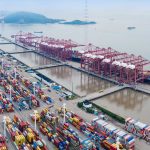McQuilling Services is pleased to announce the release of its 28th anniversary edition, 2025-2029 Tanker Market Outlook. This 183-page report provides a detailed analysis of oil fundamentals, global economic and geopolitical context in addition to tanker demand and supply projections across eight vessel classes. The interaction of tanker demand and vessel supply variables is processed using advanced quantitative modeling to produce a five-year spot and time charter equivalent (TCE) forecast for eight vessel classes across 27 benchmark tanker trades, plus five triangulated trades. To provide our readers with a market outlook driven by quantitative models and demand/supply fundamentals, we have defined the base case in this report following 1) continued Russian flows; 2) cuts in Iranian exports; 3) a Red Sea reopening; 4) limited change to US tariff policies on Canadian and Mexican oil imports; 5) smooth transits through the Panama Canal. Our earnings forecasts are derived from the evaluation of historical and projected vessel demand and tonnage supply in the tanker market within the current and future economic environment, including oil supply and demand expectations.
The pattern of using VLCC earnings as the market indicator has changed since 2022 when the EU’s ban on Russian oil imports and the “Price Cap” structure provided outsized support for Suezmax and Aframax demand. Much like the commodity market where equilibrium price will be determined by the interaction of demand and supply, the crude tanker market has been undergoing a “rebalancing process” with 103 Suezmaxes and 185 Aframax-sized tankers ordered in the past two years, to partly offset the upside support from recent US/EU/UK sanctions on tonnages that have carried Russian oils above the price cap. Tanker demand also contributed to this effort with charterers constantly favoring competitive VLCCs for short-haul trades in the Atlantic Basin and Westbound trades from the Middle East due to the Red Sea disruption. Our prevailing view for crude tankers foresees strong VLCC demand for 2025 and 2026, set to “Make VLCCs Great Again”. Weakening economic fundamentals, coinciding with an interest rate cutting cycle from the US Federal Reserve, should ultimately result in a weakening US dollar. We believe this will precipitate a developing contango structure in the crude markets towards the end of 2025 that will ultimately be bullish for tankers and the VLCC segment (with a lower orderbook in front years) in particular. Our base case call for 2025 TCEs is US $51,600/day for VLCCs, compared to Aframaxes and Suezmaxes at US $53,900/day and US $51,000/day, respectively (basis ECO tankers without scrubbers).
Earnings for product tankers in 2024 remained well above the historical averages, especially as LR2s reached their peak level since 2000. With the global economy and oil demand still facing potential recession concerns, demand for clean tankers is expected to remain flat in 2025 but increase notably in 2026 with a potential for economic stimulus to be introduced during the year. A pickup in CPP exports from India due to an extensive increase of refining capacity (+1.45 million b/d in the next 5 years) and the return of Middle East>Europe demand cannibalized by uncoated VLCCs and Suezmaxes will provide further support for our CPP tanker demand outlook. The ramp-up of Nigeria’s Dangote Refinery since Q4 2024 has significantly impacted LR1 demand, putting immediate and most demand side challenges on the LR1 benchmark Northern Europe>West Africa. However, the net impact on overall CPP demand may not be as negative as many believe as European gasoline finds a new home in Southeast Asia and East/South Africa, resulting in much longer sailing distances and offsetting the impact from the lower European exports. Major headwinds, nevertheless, will be found from the tanker supply side; we saw a record-breaking number of orders (172 LR2, 307 MR2 and 68 LR1) of coated tankers over the 2023-24 period resulting from owners’ bets on continued Russian oil flows with the Red Sea remaining closed and a strong recovery of the chemical market. The significant pressure from the tanker supply side is expected to weigh heavily on CPP tanker earnings, with most of this pressure to be found in the outer years of our forecasting period.
While navigating the most volatile waters, ship owners are also facing stricter environmental regulations, including the 2nd year phase-in ratio of EU ETS, FuelEU Maritime’s requirement for shipowners, the new Mediterranean Sea ECA zone, California state requiring vessels to comply by using a CARB-approved tug or make payment to the remediation fund, and the fast-approaching IMO 2030/2050 targets.
Source: McQuilling Services






